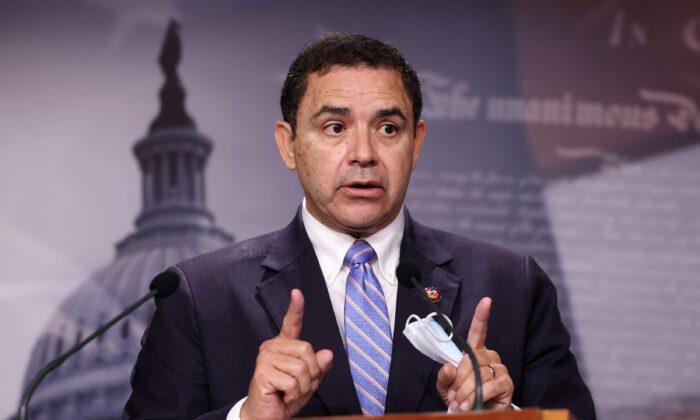U.S. trade with Canada and Mexico has rebounded to $1.6 trillion after taking a hit during the COVID-19 pandemic, according to official data.
In 2019, before the pandemic, “the U.S. had $1.2 trillion in trade with Canada and Mexico. The total weight of that trade was 579.4 million tons. Although freight traffic was not affected by pandemic-related border closures, overall economic activity slowed in 2020 following pandemic lockdowns in all three nations,” BTS said.
“For U.S. border communities, it also meant the loss of significant portions of their customer base, much of which crossed the border on a daily basis to make purchases. One of the most important lessons we should take from the pandemic is the need for the U.S. and Mexico (and Canada) to establish clear and consistent guidelines and metrics to determine when the borders will be closed and reopened to commercial and personal movement,” he said.
With the end of the lockdowns, trade between the United States, Mexico, and Canada has recovered enormously, according to BTS.
Companies Relocate to Mexico
In Mexico specifically, experts believe there was such a robust return in trade because many companies moved their manufacturing operations to Mexico from China.“It’s exponentially grown primarily due to companies’ manufacturing and logistics [operations] pulling out of China and relocating into Mexico,” Ricardo Rubiano, founder of real estate investment firm RubiGroup Capital, told The Epoch Times.
“This is not a new trend by any means; it’s been happening now for the better part of five or seven years and so because of the expansion of the manufacturing and logistics corridor from Mexico City to Monterrey to the three major checkpoints, which are Ciudad Juárez, Reynosa, and Laredo.
“Because of that, we are showing development in Mexico, and that demand has been brought forward into the United States.
“When you look at the industrial expansion in [that] corridor, Tesla is under construction in Monterrey, along with Sony and Samsung. Almost any Fortune 500 entity is now operating in Mexico or expanding their presence in Mexico significantly,” he said.
Rudman agrees with that assessment.
“Companies are moving operations back to Mexico both to shorten supply chains (another lesson of the pandemic) and to gain access to the North American market, which is one of the most competitive in the world. The wave of ‘nearshoring’ is creating extreme demand for warehouse space and for contract manufacturing, as well as for greenfield investment in new manufacturing facilities,” he said.
Laredo
No U.S. city is feeling the growing difference in trade between the United States and Mexico more than the Texas border city of Laredo.“About 40 to 45 percent of all the goods coming in from Mexico [to the United States] pass through Laredo bridges,” Laredo Mayor Victor D. Treviño told The Epoch Times. “Trade is growing rapidly; border-related trading was nearly $320 billion in 2022 [in our area].”
So much trade goes from Nuevo Laredo, Mexico, to Laredo that Treviño said the city is working on expanding the World Trade Bridge, one of four international bridges that connect to Laredo.
“We must invest in our infrastructure, and the international significance of the World Trade Bridge is very important, and it is the No. 1 U.S.–Mexico border crossing,” Treviño said.
“TxDOT stresses that the economic costs of these delays would be extreme: ‘Demand and delays at the World Trade Bridge are forecast to experience the estimated impact on GDP to move from $422.3 million in 2019 to $28.0 billion ($16.8 billion on the U.S., $11.2 billion on Mexico) in 2050,’” the report said.
Treviño said the World Trade Bridge shows the importance of binational cooperation because both sides of the border rely on commerce and consumers moving from one country to the other.
He said that during the pandemic, Laredo and its sister city across the border, Nuevo Laredo, worked together to mitigate the spread of COVID-19.
“Because of the pandemic, we were able to pull our resources together and hold on and be resilient. And with efforts of cooperation and working together, I think we can get things done in a better, more effective way. This pandemic model should serve as an example for other projects.”





